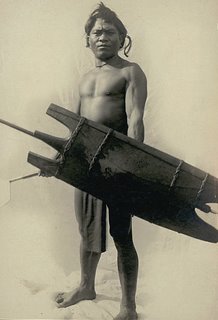Man-Made Environmental Disaster: The Aftereffects of Guimaras Oil Spill
The United Nations Development Program (UNDP) is providing $16 million (P800 million) support fund for the cleanup of the oil spill. There should be strict monitoring by the Commission on Audit in disbursement of funds. It may end up in the pockets of corrupt Gloria Arroyo officials or to be diverted in the political campaign funds of the Lakas ruling party. The party of the thieves are preparing for 2007 midterm election. The vultures in the government are snipping every opportunity to satisfy their greed of money and power.
Tar balls emerging as health threats from oil spill
The Philippine Daily Inquirer
ILOILO CITY—These hard or hardening black patches of bunker fuel oil called tar balls on the shorelines of Guimaras are turning out to be just as toxic to human health as freshly spilled oil.
The tar balls, also called weathered oil, is composed of hard to degrade oil residue such as asphaltenes and resins which produce noxious fumes dangerous to human health, according to Mary Aidine M. Galvan, microbiologist of the Philippine Reef and Rainforest Conservation Foundation Inc.
Asphaltenes are molecular substances that are found in crude oil, along with resins, aromatics, and saturates.
“Tar balls are recalcitrant (hard to degrade) and stay longer in the environment. The tar balls produce hydrogen sulfide and noxious gases such as methane that are in turn the product of anaerobic breakdown,” said Galvan.
When she started studies on bioremediation in oil spill-affected Inampulugan Island on Sept. 11, Galvan said she was shocked to see that oil has seeped into the white sands of the beach on which President Macapagal-Arroyo walked when she visited Guimaras for the second time on Aug. 28 after the Petron spill on Aug. 11.
Galvan said the oil that has seeped into the sand returns to the surface during sunny weather, and as such, there is no such thing as a total cleanup of spill-affected areas where oil has mixed with sand.
“Methane gas binds with hemoglobin and competes with the oxygen binding capacity of a person’s blood, resulting to hypoxia and anoxia that may result to sickness or death,” said Galvan, a member of the Marine Section of the Society of Conservation Biology of the United States.
Anoxia is a condition in which there is an absence of oxygen supply to an organ’s tissues although there is adequate blood flow to the tissue while hypoxia is a condition in which there is a decrease of oxygen to the tissue in spite of adequate blood flow to the tissue, said the US National Institute of Neurological Disorders and Stroke.
The Institute said that in severe cases of anoxia and hypoxia, the patient is often comatose for periods ranging from hours to days, weeks, or months. Seizures, muscle spasms or twitches, and neck stiffness may occur, it added. Susceptible to sickness related to the toxic fumes from bunker fuel oil are the elderly, children, asthmatics and those with respiratory ailments, said Galvan.
OIL SPILL
Barge spills Guimaras oil debris off Misamis Occidental
Labels: Environment, Guimaras Island, Man-Made Disaster, Oil Spill





 Deviant Art
Deviant Art
1 Comments:
The Philippines is not ready to deal with such catastrophic disaster. It took weeks before plan of action was implemented. The response time from the government is disgusting. The latest Typhoon Milenyo destroyed power lines in Metro Manila and it took days before Meralco restored power. Giant propaganda billboards of Gloria Arroyo should be dismantled first. It’s a safety hazard to motorists and residential communities.
Post a Comment
<< Home